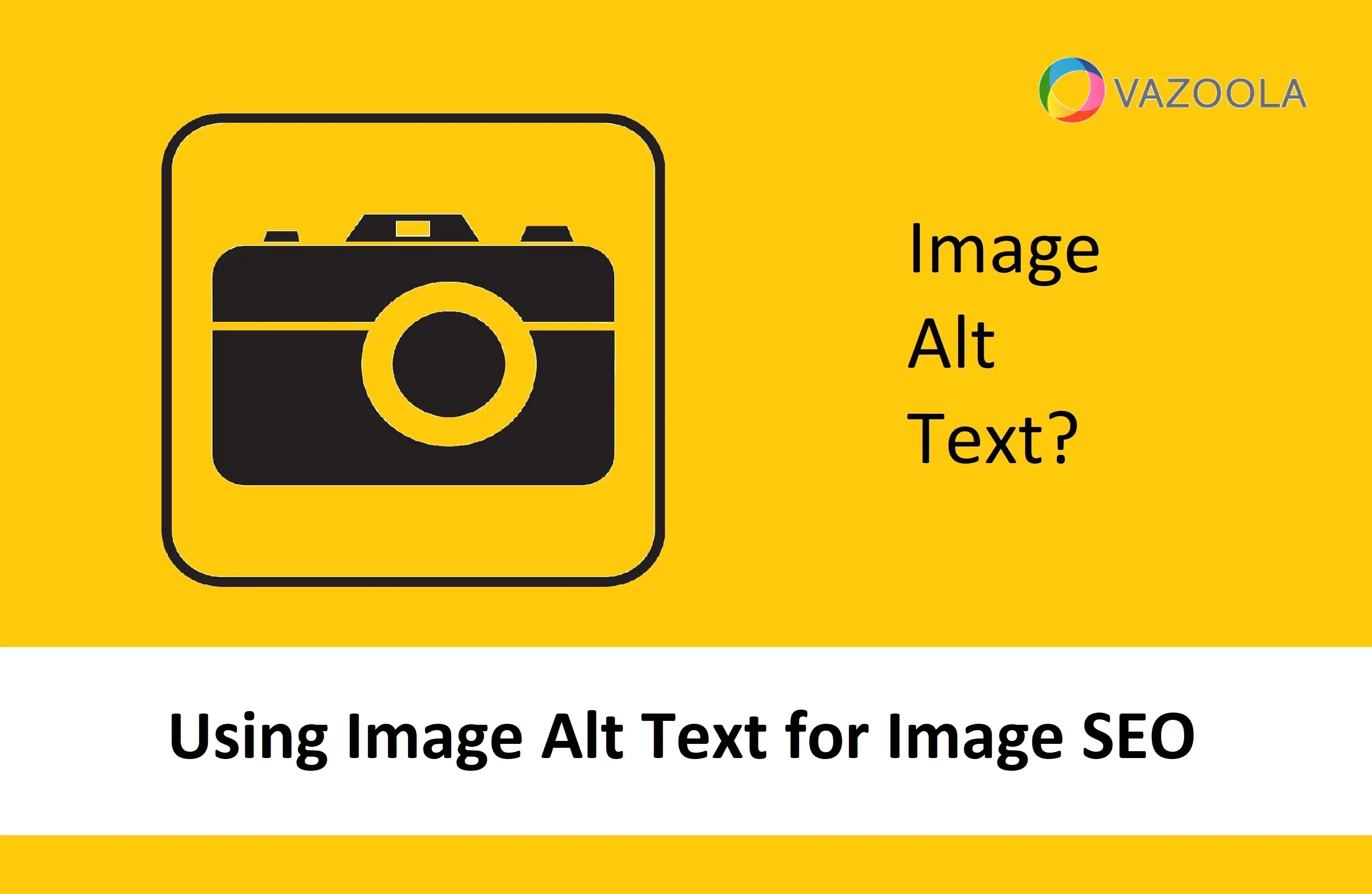Using Image Alt Text for Image SEO
Jun 16, 2021
Written by Casey Bjorkdahl

Casey Bjorkdahl is one of the pioneering thought leaders in the SEO community. In 2010, Casey co-founded Vazoola after working for a Digital Marketing Agency for five years in New York City. Vazoola is now one of the fastest growing and most widely recognized SEO marketing firms in the country.

If you want to make sure people read your articles, you need to include plenty of images. Videos would be even better, however the saying that a picture is worth a thousand words is certainly true when it comes to blog posts, articles, and even white papers. If you want to get the most out of your images, you need to think carefully about search engine optimization. You may not be aware that images play an important role in your SEO campaign; however, if you are wondering how to optimize images for SEO, you need to learn more about alt tags. When it comes to alt tags for images, what are a few alt text best practices you need to keep an eye on? If you would like to learn more about how to add alt text to images, take a look at some helpful information below. We address many of the common questions we come across including:
What is alt text?
How to add alt text to images
How to optimize images for SEO
What is an alt tag?
Optimize Your Images: What Is Alt Text?
The alt and title attributes of your images are commonly shortened to alt tags and title tags. Even though they are not technically tags, they are important attributes when it comes to your images. The role of this information is to describe to search engines, websites, and other digital entities what the image is about and what role the image plays on the page. For example, if you have an image on your page that acts as a button to purchase a certain product or service, the alt text should say, “button to purchase product.”
Screen readers rely on alt tags to let them know what the image is about. The title attribute usually appears when someone (or something) hovers over the element itself. For example, the image title might even contain an extra call to action; however, this is not in line with current best practices.
Ultimately, every image should have an alt text or title tag attached to it. Even though this is important for SEO purposes, it is also helpful for people who are visually impaired who might not otherwise know what the image is about. Make sure you include alt text for all of your images and videos to get the most out of them.
Alt Tag: What Is Image SEO?
Image SEO is incredibly important because it plays a role in your digital marketing campaign. There are plenty of people who are going to visit your website purely to take a look at the images and scroll through the videos. Search engines know this as well. Therefore, they prioritize search engine optimization when it comes to images.
If you prioritize image SEO, you can elevate your digital marketing campaign above that of the competition. Conversely, if you do not think about search engine optimization for your images and videos, you could be harming your online presence.
What Has an Effect on Image SEO?
There are numerous factors that play a role when it comes to your image SEO. A few examples include:
- The amount of time it takes for your images to load will influence your SEO campaign. If your images load quickly, this will benefit your SEO campaign by reducing your bounce rate.
- Your alt text and tags are critical because they let search engines know what the image is about. If you pick your text and tags carefully, search engines will have an easier time indexing your page, improving your SEO campaign.
- The resolution quality of your image will also influence SEO. The better the image is, the better your SEO.
These are just a few of the many factors that will influence search engine optimization when it comes to your images. If you want to put your images to work for you, you need to think carefully about how you can align your images with the rest of your digital marketing campaign.
How Does Alt Text for Images Help SEO?
Search engines, including Google, place a premium when it comes to alt text and title tags. Google openly says that all images and videos should use descriptive alt text. Because Google is making this information public, it is clear that Google (and other search engines) prioritize the value of alt text. Search engines use this information to figure out:
- What the image is about
- How it relates to the rest of the text on the page
- What the rest of your website is about
If you do not take advantage of image alt text, you are overlooking a critical part of your SEO campaign and your digital marketing strategy.
Fortunately, there are plenty of tools that can help you figure out how you can get the most out of your image SEO. These tools can help you figure out the right alt text, alt tags, title tags, and meta descriptions for your images and videos. At the same time, you may want to reach out to trained professionals who can help you get the most out of your alt text and tags.
What Are the Best Practices for Using Alt Text for Images ?
While using alt tags to optimize your website’s photos can help boost your rankings, it is essential to follow a few best practices for using them.
- Be as specific as possible
- Use your keywords where appropriate
- Don’t forget about your call-to-action buttons such as “sign up” and “apply now”
- Make sure to place images near relevant text and on pages that are relevant to the image subject matter
- Avoid keyword stuffing within your tags as it might cause your site to be seen as spam
- Don’t use more than 125 characters
- Make use of long description tags for more complex images
This can help to improve overall optimization and prevent search engines from missing vital information that might affect rankings.
Whether you maintain your website for business or pleasure, on-page search engine optimization can have a great deal of impact on its search engine rankings.
Using alt image tags that allow crawler software to read and recognize them may bring increased traffic to your site and give you increased exposure.
Which Images Need Alt Tags?
Any photo you add to your site needs an alt image tag. Not only does it help the search engines to find your content, but it helps those who are visually impaired to understand what is being shown in the images. They often use screen readers that can “see” an alt attribute to get a better understanding of on-page images. Using alt images can also be helpful for users who might have limited access to Wi-Fi when they are on mobile and are experiencing bandwidth restrictions. Even if they cannot see the image or it loads slowly, your visitors will at least have a description of the missing image.
Get the Most out of Images by Using an Alt Attribute
Alt tags for images are an important part of your SEO campaign. Make sure that you get the most out of your image alt tags below. By the way, if you would like to learn more about taking advantage of image alt text options be sure to reach out to trained professionals for help. SEO image optimization can do wonders for your digital marketing campaign. If you make sure to add img alt text to every picture and video you post, you can get the most out of SEO image optimization. Put these practices to use and increase your online visibility.

